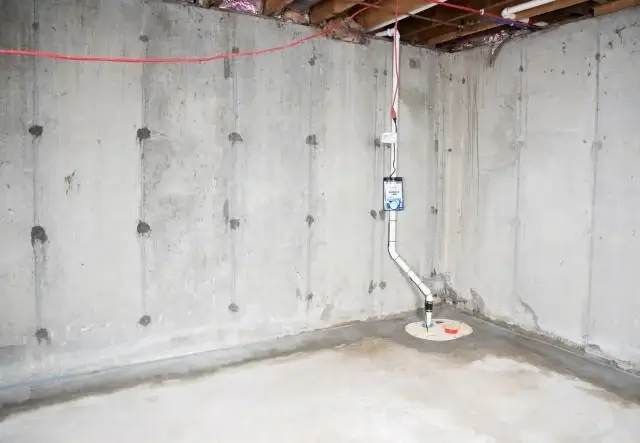A dry and watertight basement is not only essential for the structural integrity of your home but also for creating a healthy and habitable living space. One of the key elements in achieving basement waterproofing is the use of waterproofing membranes. These specialized materials serve as a barrier against moisture intrusion, preventing water from seeping into your basement and causing damage. In this article, we will explore the indispensable role of waterproofing membranes in basement waterproofing, their types, installation methods, and the benefits they offer homeowners.
Understanding Basement Waterproofing
Basement waterproofing is the process of applying various techniques and materials to prevent water infiltration into the basement or lower levels of a structure. It is essential for several reasons –
- Protection – Waterproofing safeguards the foundation and structural components of your home from water-related damage, such as cracks, efflorescence, and deterioration.
- Health and Comfort – A dry basement is essential for maintaining healthy indoor air quality and preventing mold and mildew growth, which can have adverse health effects.
- Property Value – A waterproofed basement enhances the value of your property and makes it more attractive to potential buyers.
The Role of Waterproofing Membranes
Waterproofing membranes are a critical component of basement waterproofing systems. They act as a barrier that prevents water and moisture from penetrating the basement walls and floor.
Membranes create a waterproof seal over the surfaces they cover, effectively blocking water intrusion from the exterior. Some membranes also provide damp-proofing capabilities, which are designed to resist moisture vapor transmission through concrete and masonry.
Some waterproofing membranes can bridge small cracks in the foundation, preventing them from expanding due to water pressure. By protecting the concrete or masonry from exposure to moisture, waterproofing membranes help extend the lifespan of the basement structure.
Types of Waterproofing Membranes
There are various types of waterproofing membranes available, each designed for specific applications and conditions. The most common types include –
a. Sheet Membranes – These are large sheets or rolls of waterproofing material that are applied to the exterior foundation walls. Sheet membranes are commonly used during new construction or major renovations.
b. Liquid Membranes – Liquid waterproofing membranes are applied in a liquid form and then cure to form a seamless, watertight barrier. They are flexible and ideal for irregular or complex surfaces.
c. Spray-Applied Membranes – These are sprayed onto the foundation walls as a liquid and form a continuous, flexible membrane as they cure. Spray-applied membranes are efficient for large-scale applications.
d. Bituminous Membranes – Bituminous waterproofing membranes are made from asphalt or modified asphalt compounds. They are commonly used for below-grade waterproofing and are known for their durability.
e. Cementitious Membranes – These waterproofing membranes are cement-based and are applied as a slurry or trowel-applied coating. They bond chemically to concrete surfaces and are often used for interior basement waterproofing.
f. Bentonite Membranes – Bentonite clay membranes swell upon contact with water, creating an impermeable barrier. They are commonly used in below-grade applications.
Methods of Installing Waterproofing membranes
The installation of waterproofing membranes is a critical step in the basement waterproofing process. The method used may vary depending on the type of membrane and the specific application. Here are some common installation methods –
Exterior Waterproofing Membranes
- Excavation – The area around the foundation is excavated to expose the exterior walls. Waterproofing membranes are applied to the cleaned and prepared surfaces. This method is commonly used during new construction.
- Sheet Membrane Application – Large sheets of waterproofing membrane are applied to the exterior walls and sealed at the seams. Proper surface preparation and meticulous detailing are crucial for a watertight seal.
- Liquid or Spray Application – Liquid or spray-applied membranes are applied to the exterior walls in multiple coats. The material cures to form a seamless barrier.
Interior Waterproofing Membranes
- Surface Preparation – The interior surfaces of the basement walls are cleaned, and any existing coatings or contaminants are removed.
- Application – Depending on the type of membrane, it may be applied as a liquid, slurry, or sheet. Liquid and cementitious membranes are often applied with brushes or sprayers, while sheet membranes are adhered to the interior surface.
- Sealing Joints and Cracks – Special attention is given to sealing joints, cracks, and penetrations to ensure a continuous waterproofing barrier.
The use of waterproofing membranes offers homeowners several significant benefits. Waterproofing membranes create a barrier that prevents water from seeping into the basement, protecting it from damage.
By preventing moisture intrusion, waterproofing membranes help extend the life of the basement’s structural components. In addition, waterproofing membranes reduce the risk of mold and mildew growth, improving the indoor air quality of your home.
A dry and waterproofed basement enhances the overall value of your property and makes it more attractive to potential buyers. Knowing that your basement is protected against water intrusion provides peace of mind and confidence in the long-term stability of your home.
Waterproofing membranes are indispensable elements of basement waterproofing systems. They create a robust, protective barrier against moisture intrusion, ensuring a dry and healthy living space while safeguarding the structural integrity of your home. Whether you’re building a new home or addressing moisture issues in an existing basement, the proper selection and installation of waterproofing membranes are essential steps in creating a resilient and waterproof basement environment.

